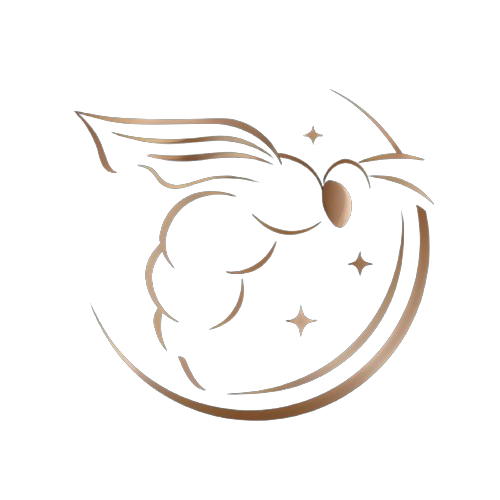Winery Overview & History
Château Margaux, located in the Margaux commune of Bordeaux’s Médoc region, is one of the five Premier Grand Cru Classé estates from the 1855 Bordeaux Classification. Renowned for its unparalleled grace and aromatic complexity, it has long been celebrated as the “Queen of Bordeaux.” Even U.S. President Thomas Jefferson once described it as one of his favorite wines from the region.
The name “Margaux” appeared as early as the 12th century, though vineyards were not established until the late 16th century. Under the Lestonnac family (1572–1582), the estate underwent major restructuring and expansion, laying the foundation for its modern viticultural practices. By the 17th century, Château Margaux had already become a model for high-quality viticulture in the Médoc, distinguishing itself through strict grape selection and refined winemaking techniques.
In the 18th century, under the guidance of estate manager Berlon, Château Margaux pioneered separating red and white grape fermentations—an innovation far ahead of its time. This marked the birth of the estate’s modern identity, emphasizing precision and terroir expression. Margaux’s wines became known for their perfume-like aromas, refined texture, and remarkable balance.
Following the French Revolution, Château Margaux faced turbulent times. Its vineyards and cellars were confiscated as national property, but the estate was eventually acquired by Bertrand Douat, Marquis de la Colonilla in 1801. He commissioned architect Louis Combes to design the magnificent neoclassical château, completed in 1815 and often called “the Versailles of the Médoc.” This architectural masterpiece, along with its vineyards, was later listed as a UNESCO World Heritage Site.
Ownership changed hands several times during the 19th century, eventually passing to the Pillet-Will family, who guided the estate through both prosperity and crisis. Despite challenges such as phylloxera and global recessions, Château Margaux consistently upheld its reputation for excellence. In 1977, amid economic hardship in Bordeaux, the estate was acquired by Greek-French businessman André Mentzelopoulos, whose visionary investments revived Margaux’s legacy. His daughter, Corinne Mentzelopoulos, continues to manage the estate today, maintaining its global prestige.
Vineyard Location & Terroir
Château Margaux’s vineyards cover approximately 92 hectares (about 228 acres), of which 80 hectares are dedicated to red varieties and 12 hectares to white. The vineyards are planted on gently sloping gravel soils mixed with limestone and clay, providing ideal drainage and mineral balance. The average vine age is around 45 years, with a planting density of about 10,000 vines per hectare.
This exceptional terroir benefits from the temperate maritime climate of the Gironde estuary, ensuring long, even ripening seasons that yield grapes of both concentration and aromatic finesse. Each parcel is vinified separately, allowing precise blending that captures the essence of Margaux’s terroir.
Grape Varieties & Wine Style
The vineyard is planted with Cabernet Sauvignon (75%), Merlot (20%), Petit Verdot (3%), and Cabernet Franc (2%) for red wines, while the white variety is 100% Sauvignon Blanc.
Château Margaux’s wines are characterized by their exquisite balance, aromatic intensity, and velvety texture. The reds combine power with refinement—offering floral notes of violet and rose, alongside blackcurrant, cedar, and truffle. With age, they develop layers of tobacco, earth, and spice while retaining remarkable freshness. The estate’s rare white wine, “Pavillon Blanc du Château Margaux,” is among the most elegant expressions of Sauvignon Blanc in Bordeaux, known for its vibrant minerality and longevity.
Signature Wines
- Château Margaux (Grand Vin) – The flagship wine, produced from the finest parcels of old vines, representing the pinnacle of balance and elegance.
- Pavillon Rouge du Château Margaux – The second wine, introduced in the early 20th century, offering a refined, accessible version of the Grand Vin with outstanding aging potential.
- Pavillon Blanc du Château Margaux – A 100% Sauvignon Blanc white wine that showcases remarkable purity and complexity.
Exceptional vintages include 1900, 1953, 1961, 1982, 1990, 1996, 2000, 2005, 2009, and 2015, with critics such as Robert Parker awarding some vintages near-perfect scores.
Winemaking & Cellar Practices
Château Margaux remains deeply rooted in tradition while embracing modern techniques. Red wines are fermented and aged in oak barrels for 18 to 24 months, while white wines undergo barrel fermentation and are aged for 6 to 8 months. All wines are made using hand-harvested grapes, sorted with precision to ensure only the finest fruit is used.
Under the technical leadership of Philippe Bascaules and the late Paul Pontallier, the estate continually refined its approach, balancing innovation with respect for tradition. Their meticulous craftsmanship ensures that each vintage expresses Margaux’s signature elegance and harmony.
Visitor & Contact Information
Address: 33460 Margaux, France
Phone: +33 5 57 88 83 83
Fax: +33 5 57 88 31 32
Website: www.chateau-margaux.com
Email: chateau-margaux@chateau-margaux.com
Visiting: Monday to Friday, by appointment only
* Photo Courtesy of Wikipedia
